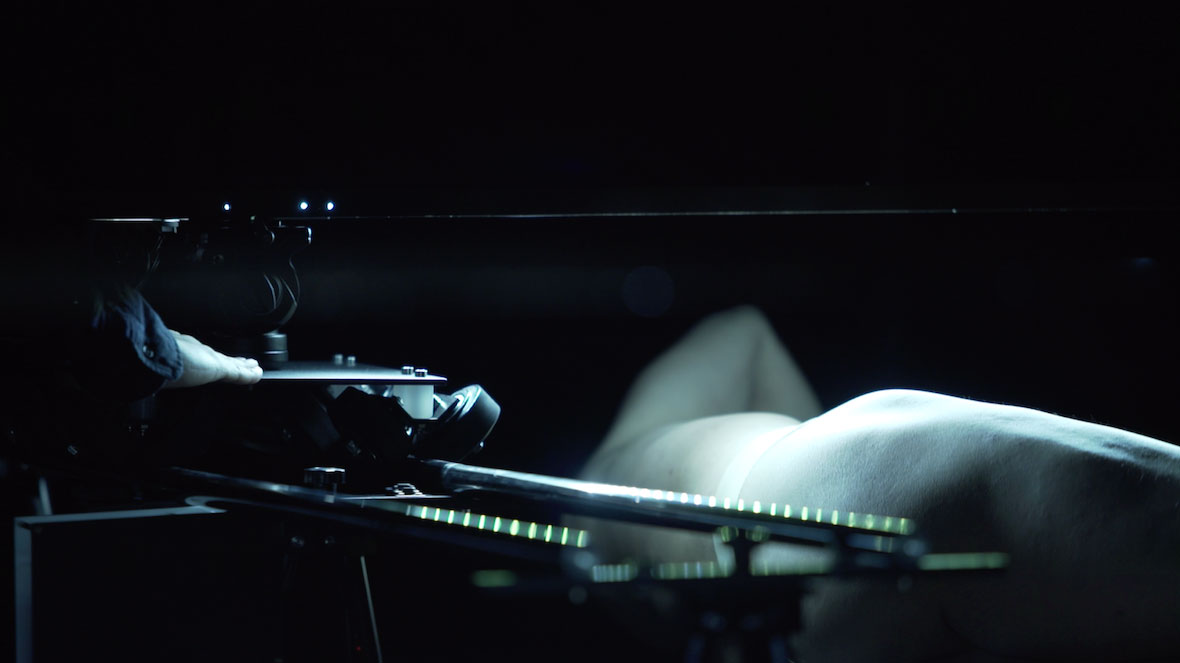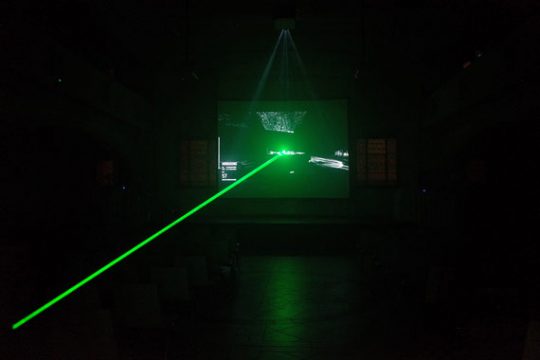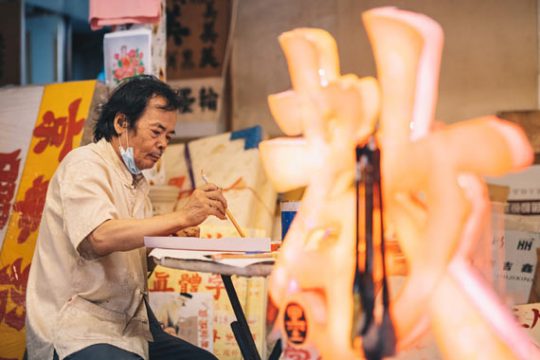无法观看?前往优酷
It’s a show the audience itself can’t help being a part of: in a dark, silent room, performers in tights lie down on a sort of bed and flail their limbs in an improvised way. Gradually a series of fluctuating, billowing images appear on a screen behind them as a dream-like music begins to sound. Everyone is drawn into a surreal ceremony until the performers leave the stage, and viewers turn around and look at the corporeal landscape evolving before their eyes.
This is Soundscape of Body. Transforming bodies’ shapes into image and sound, it seeks to let us see the body’s music, to hear the body’s terrain.
这是一场所有观众都没办法置身事外的表演:在一片寂静的黑暗中,表演者身穿打底服,或是平躺,或是即兴地舞动身体和四肢。此时,荧幕上逐渐出现一道道变幻多端的曲线波澜,耳里传来一阵阵如梦似幻的乐音,所有人仿佛被带入一场超现实的观礼仪式。直到表演者离开舞台,转身回望眼前这一片衍生自自己身体的风景。
这是《大音希声》,通过转换身体的形状,它想让你看见身体的声音、听见身体的风景。
The Chinese name of the performance, Da Yin Xi Sheng, comes from chapter 41 of the Dao De Jing. It literally means “great sound, soft voice” but might be interpreted to mean the louder a sound is, the harder it is to hear.
“Your body is like a mystery. You can see it, but you never hear it. Through this work, I want you to hear the sound of your own body,” says Keith Lam, whose creative team, Dimension Plus, is behind Soundscape of Body. Lam is a Hong Kong-based new media artist who Neocha has written about before. This time he collaborated with his group’s coder, Seth Hon, to create this piece, which won a special honor at the 2018 Golden Pin Awards for the Best Designs of the Year.
《大音希声》取名自《道德经》第四十一章,意思是愈是宏亮的声音,愈是听不见。
“身体像是一道谜。你看得见,却从没有听过它。通过这件作品,我想让你听见它的声音。”Keith Lam 说。Keith 和他的团队 Dimension Plus 是《大音希声》的幕后创作者。在我们过去的报导中,曾介绍过这位来自香港的新媒体艺术家。这一次,他协同团队中的编码师 Seth Hon(韩家俊)完成的此件创新作品,获得了 2018金点设计奖“年度最佳设计奖”的殊荣。
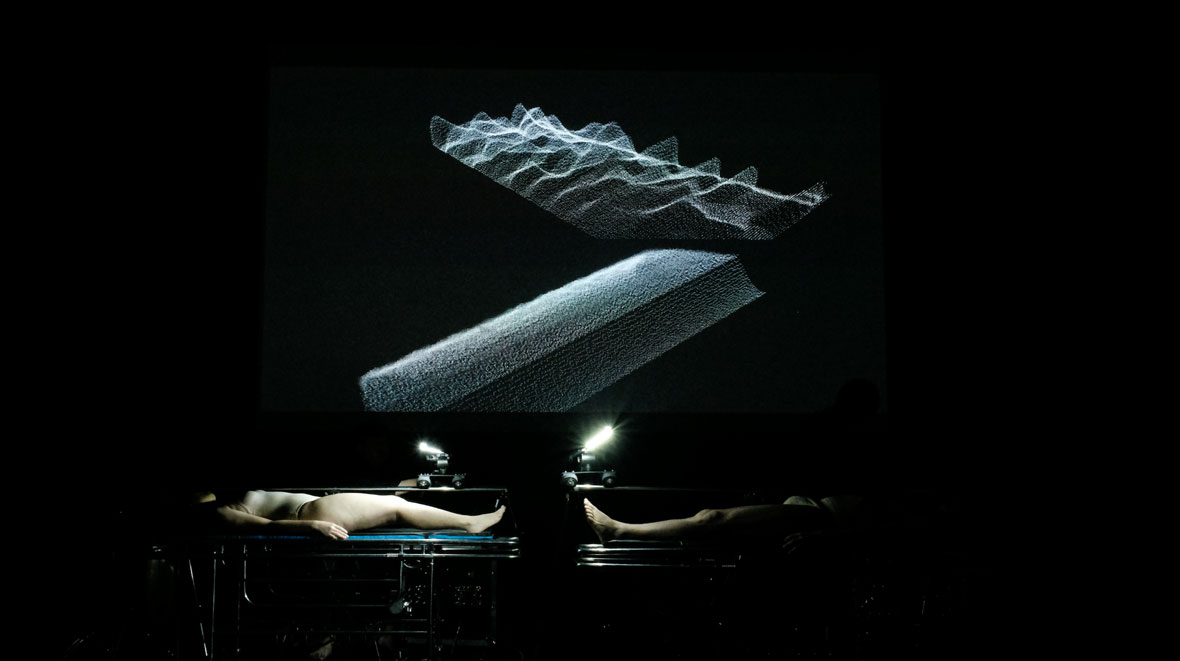
“It’s a completely new and innovative way to create original music from our body,” said the judges. “It uses science to communicate how our body can contribute to society even after our passing.” Among the over 5000 works in this year’s competition, 37 took home awards. Others include Mist Encounter, a water-themed art installation made out of recyclable materials, and The Affairs, a new print newspaper.
This year’s awards were full of works that showed humanitarian concerns and an awareness of environmental sustainability. Each year the selection shows that design means more than just creating beautiful things. We live in an age where the objects around us become obsolete too quickly. Good design should do more than show creative thought—equally important is whether it can curb the waste of resources and remain “future-proof” as time passes.
“这是一个完全创新的手法让我们的身体创造出音乐。它运用了科学,来传达我们的身体即使在死后也能为社会做出贡献。”评审说。在今年参奖的五千多件作品之中,最终有 37 件获得年度最佳设计奖。同样得奖的还有运用可回收建材打造的《供雾所》(Mist Encounter)、以及献给新世代的报刊《周刊编集》(The Affairs)。
在今年的金点设计奖中,处处可见满载人文关怀和环保永续意识的作品。它通过每一年度的遴选,再再向我们传达一个讯息:设计的意义不再止于创作美的东西。我们处在一个身边的事物汰换速度过高的时代,一件好的设计,除了拥有创新的思维,是否有助于停止资源的浪费,以及具备“不被未来淘汰”的跨时代性,是同样重要的事情。
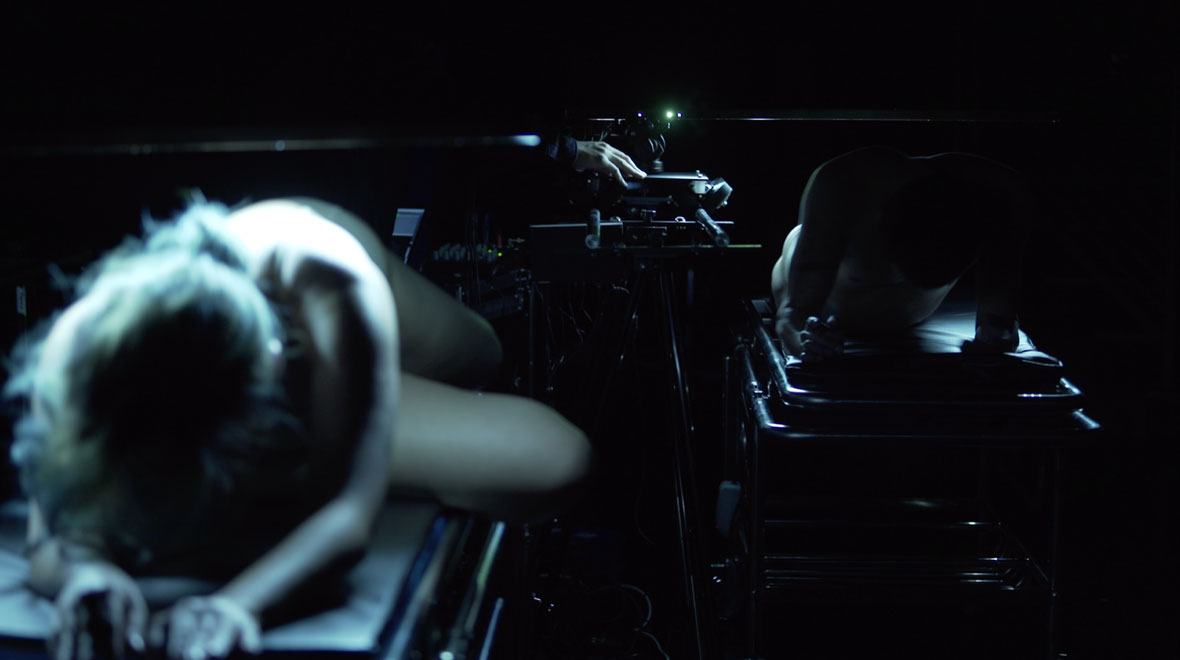
Can people’s bodies become obsolete?
That’s a question that Lam, as he was conceiving this piece, wanted audiences to think about. He took up the project on commission for the Body Donation Programme at the Hong Kong University Medical School, which every year works with artists to create art. It aims to increase the public’s awareness of body donation and get them to think about the nature of bodies and the meaning of life—and the possibility that even after death, a body’s value can be extended.
When taking on this project, Lam did a lot of homework. One sentence he heard from Chan Lap Ki, an anatomy professor at the medical school, stuck with him: “the organs of the human body are as beautiful as any landscape.” He kept thinking about what it meant. A landscape isn’t necessarily just something you see, it can also be something you hear. What if you could make everyone’s body become a tune?
而人的身体,是否也能不被时间淘汰?
这是当 Keith 受到香港大学医学院的遗体捐赠计划“大体老师”的委托,在构想作品的同时,希望带给观众思考的问题。每一年,大体老师计划都会委托艺术家去创作,希望能借此提升大众对于捐赠遗体的认知,以及激发观众思考何谓生命的本质与身体的意义——即使在死后,身体的价值是否有延续下去的可能。
在接到这个项目之后,Keith 做了许多功课。当他从医学院的解剖学教授陈立基先生的访谈中,听到了这一句话“人体器官就好像风景一样漂亮。”时,便心心念念着这话里的含义。风景不一定是通过观看,也可以通过聆听来欣赏。如果让每个人的身体,都成为一章乐曲呢?
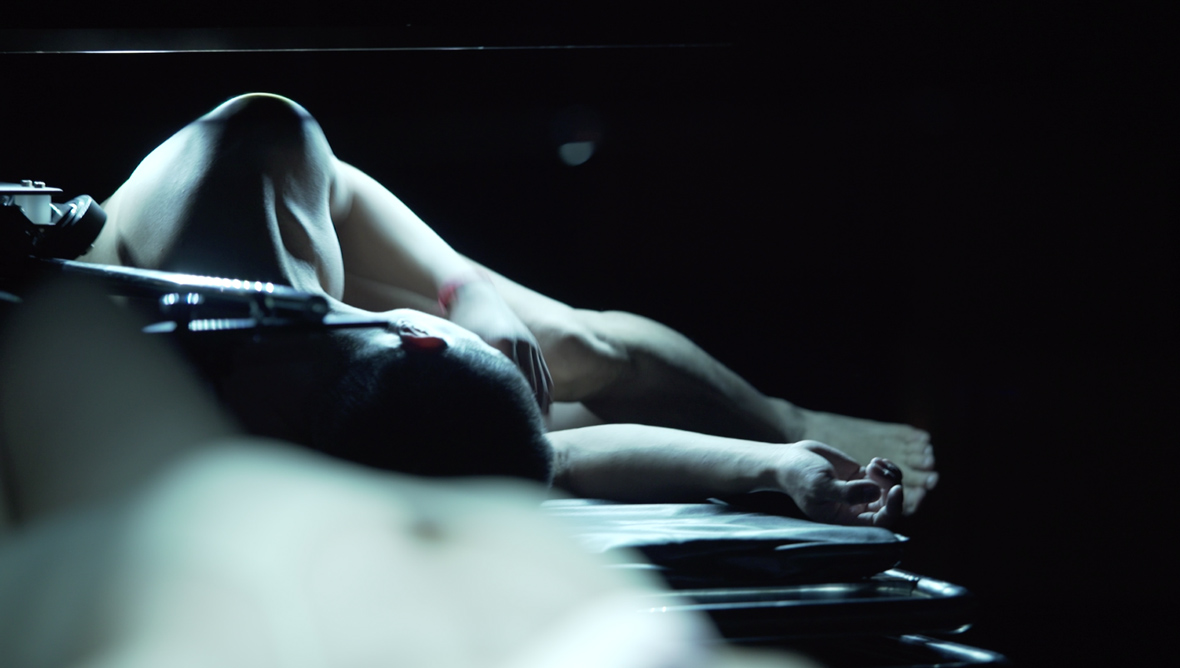
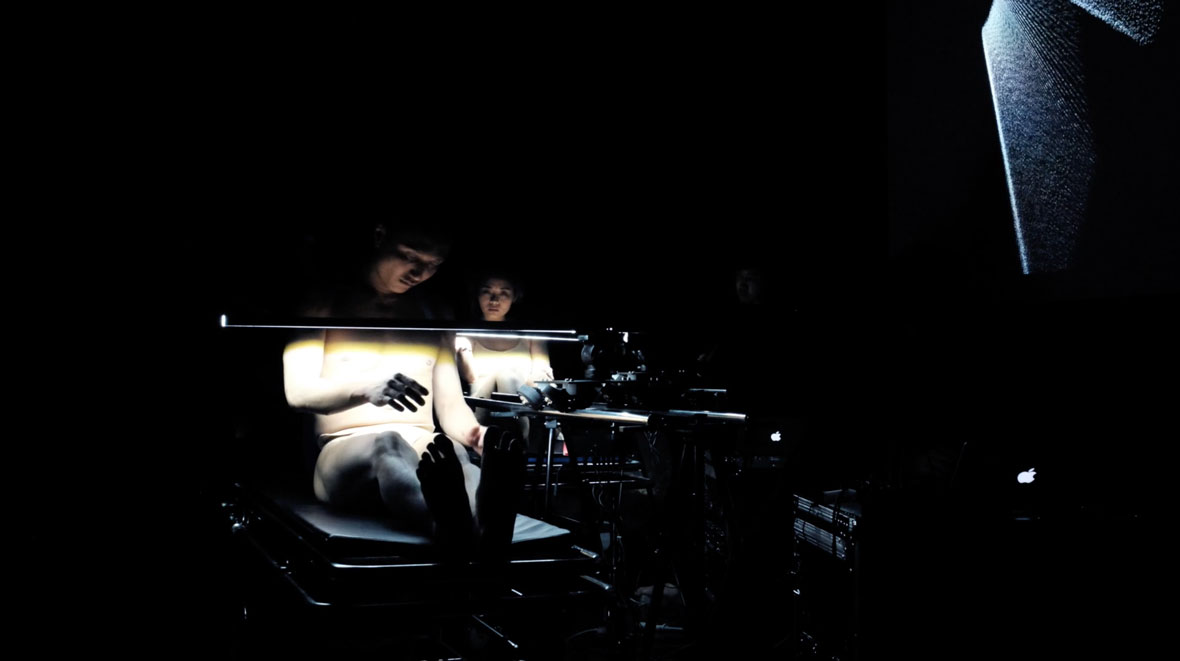
Soundscape of Body uses a parallel motion scanner that detects the distance from the performer’s body and uses a special coding technology to turn these data into images and music. The closer one gets to the sensor, the lower the sound gets. “All the performers are improvising, and we can’t tell them ahead of time what to do,” Lam explains. “So each performance is unique.”
After the performance ends, the audience can also get up on stage and scan their own bodies, and the results are anonymously uploaded to a website. “The interactive part got more popular than I expected. Audiences would wait to get on stage and have their own body scanned, for that may be the first time they listen to music from their own body.”
《大音希声》在操作设计上,运用了一支平行移动的扫描器,侦测与表演者身体之间的距离,再通过特殊的编码技术,将这些数据转换成影像和音乐。越接近感应器,转化出来的声音就越低音。“所有表演者都是即兴演出,我们不会事先告诉他们应该怎么做。所以每一场表演都是独一无二。”
在表演结束后的体验环节中,观众也可以上台扫描自己的身体,转化出来的结果会以匿名的形式上载到网站。“这部分的互动超乎我们想像的热络,常常是很多人挤在前面等着上台让自己的身体被扫描,这可能是他们第一次‘听见’自己的身体。”
“身体的高低起伏本身就是一种自然的美,是节奏和音调。”Keith说,“当我们的身体作为乐谱,在听的同时,就能从一个完全不同的视角去重新发现我们的身体,进而,想到生与死。”
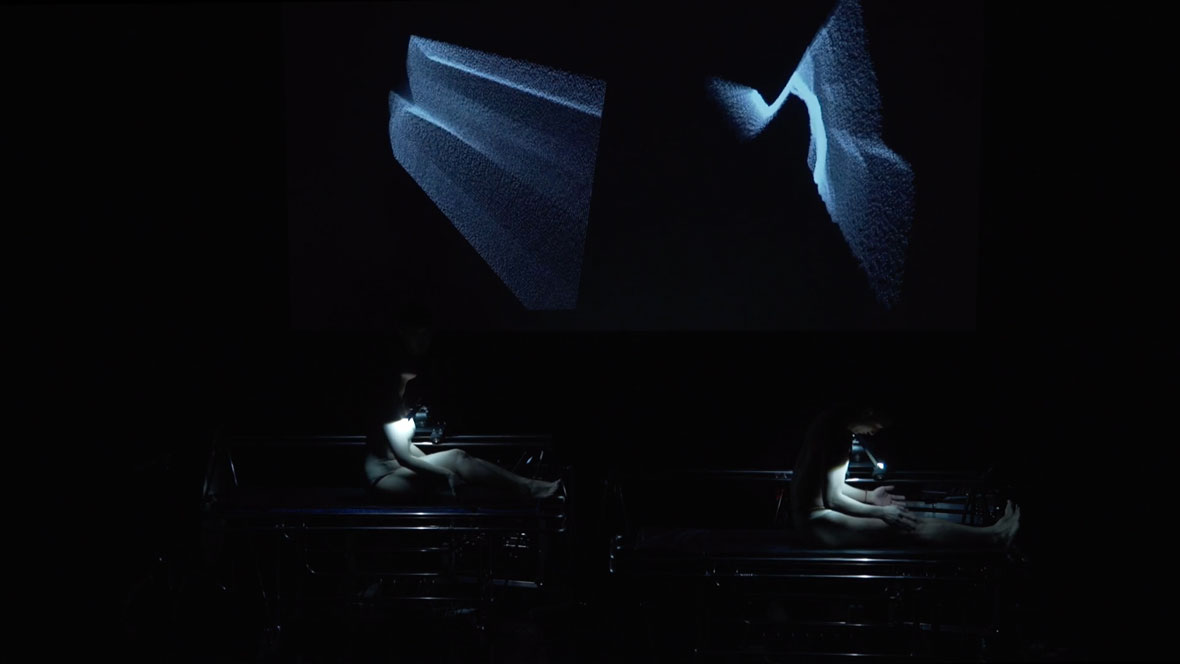
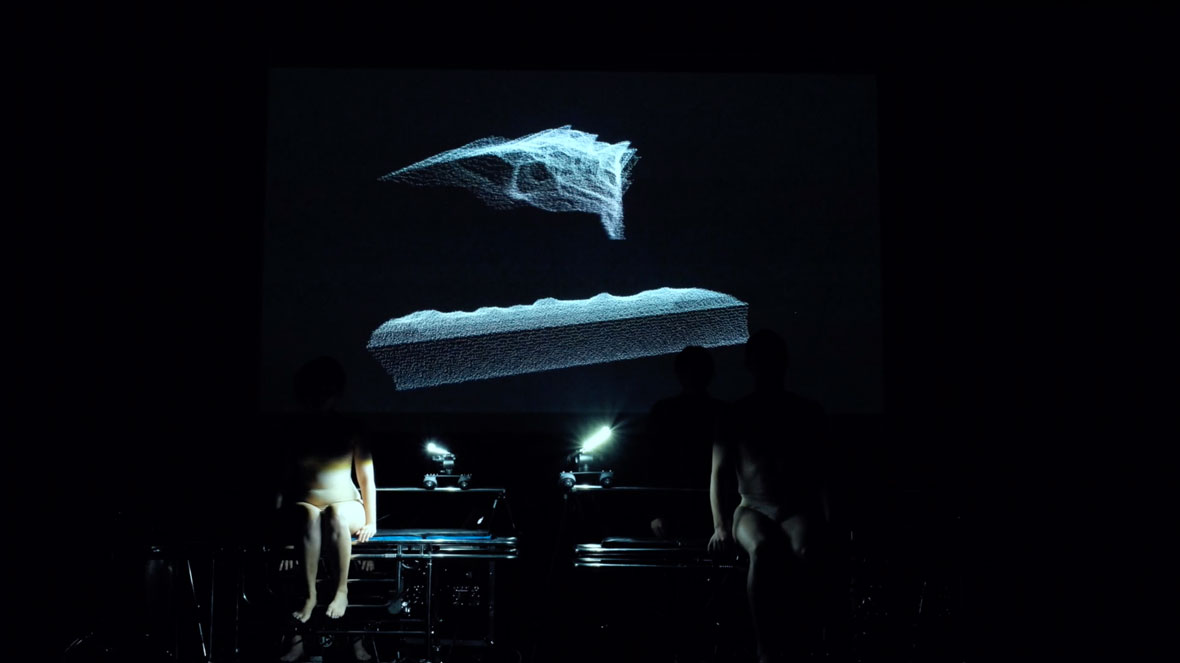
Website: keithlyk.net | dimensionplus.co
Instagram: @keithlyk | @dimensionplus
Contributor: Yang Yixuan






